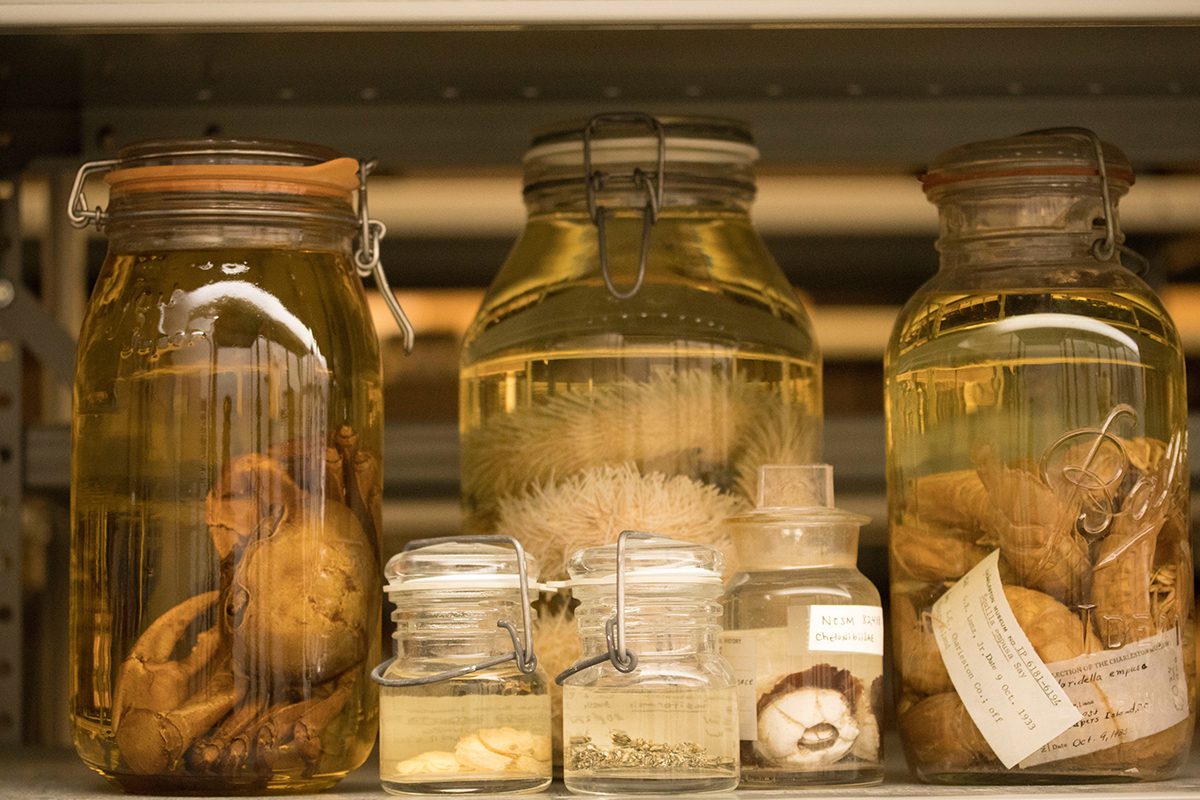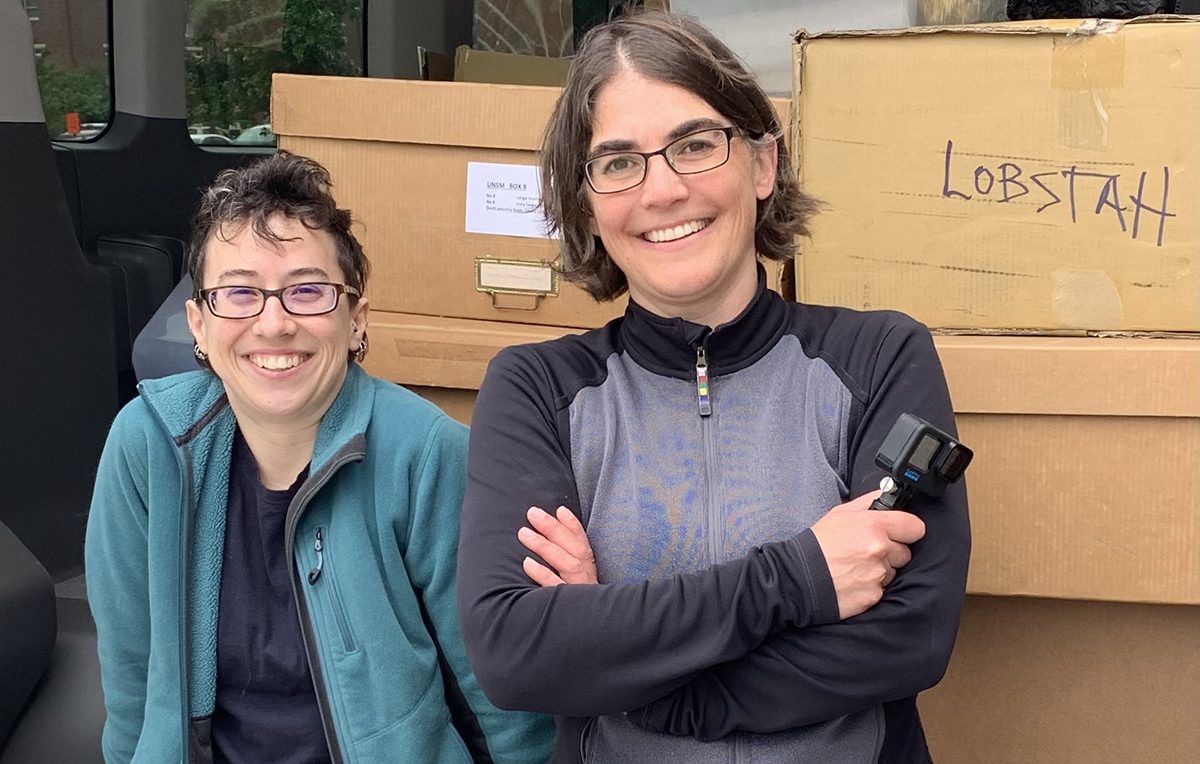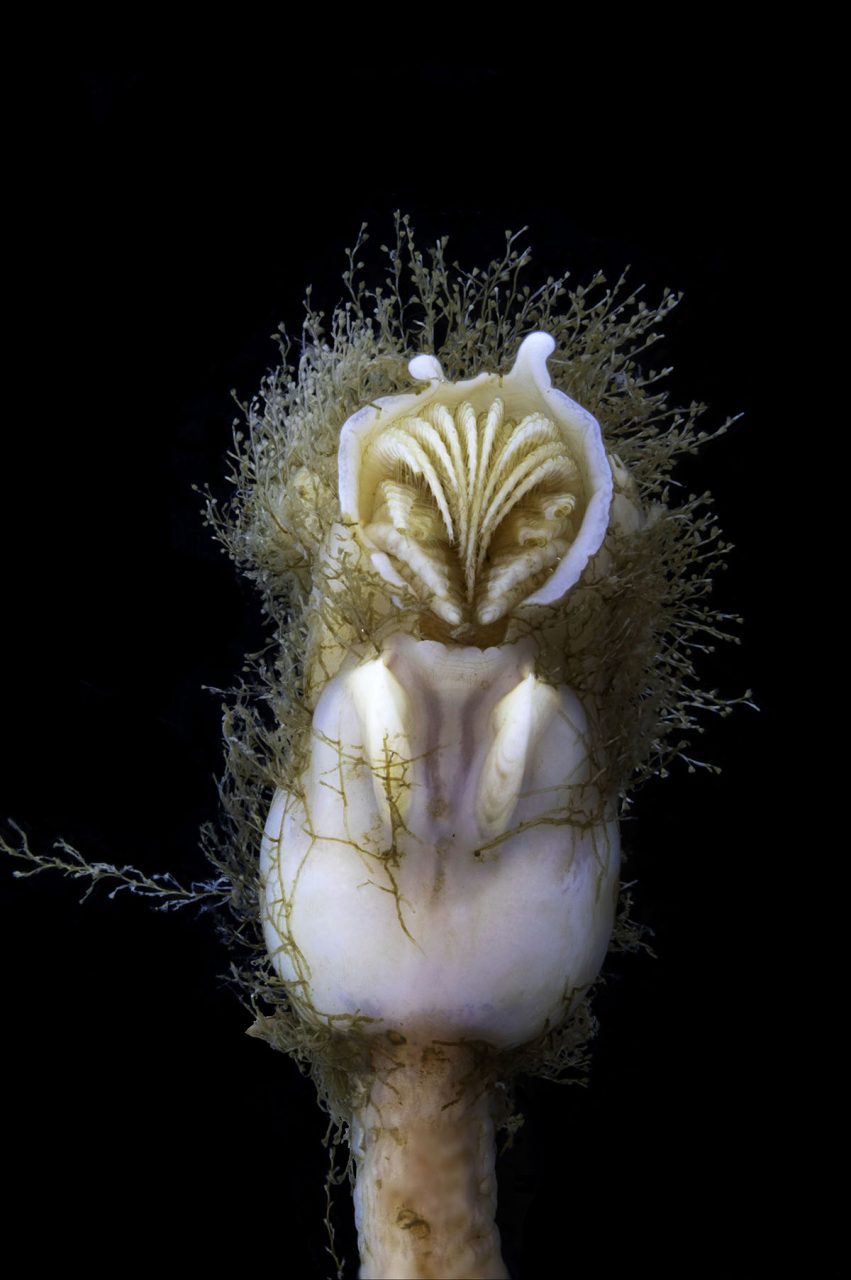
Ever mosey through a museum and pass by a display of those little ethanol-filled jars holding spineless creatures and think “big deal” as you head to check out the dinosaur exhibit?
Turns out, the contents of those jars are rife with clues that may help researchers unlock some of the mysteries of our coastal environment and help them better gauge the effects of climate change and pollution.
Supporter Spotlight
“The power of museum collections is that they’re a combination of donations from a variety of different sources, each with their own stories and usefulness, but when you put them together that really provides something that can be used in ways that we may not comprehend quite yet,” said Bronwyn Williams, research curator of non-molluscan invertebrates at the North Carolina Museum of Natural Sciences in Raleigh.

Williams and Megan McCuller, collections manager of non-molluscan invertebrates, oversee what is ostensibly the largest research collection at the museum.
Non-molluscan invertebrate is a fancy term for animals that don’t have spines — think shrimp, worms and crabs.
Since its creation in 2017, this collection has grown to include tens of thousands of specimens collected as far back as the mid-1800s from freshwater, land, and near and offshore marine habitats of the Carolinas, mid-Atlantic region, and the Southeast.
It is a separate collection from the museum’s mollusk collection, including mussels, clams, snails, octopuses and squids.
Supporter Spotlight
Specimens preserved in ethanol-filled jars, vials and, for the larger critters, buckets or tanks, are housed in a building suitable for storing thousands of containers filled with flammable liquid a few miles away from the Museum of Natural Sciences main building in downtown Raleigh.

This means the collection is primarily out of view day to day, barring the occasional display of a small fraction of non-molluscan invertebrate, at what is said to be the state’s most-visited museum.
Williams’ and McCuller’s work is more of a behind-the-scenes job, one that entails cataloging information that can include details about who got a specimen, where and when it was collected, and why it was collected.
And the specimens have come through a variety of means, whether from someone fishing off a pier stretching out from the ocean shore, a research vessel, orphaned collections donated to the museum, employees of the museum, even a World War II American airman who collected specimens from the shores of Australia during a stint overseas.
In many cases, the more Williams and McCuller dive into that history, the more they discover, and they want to share that with the public and with researchers.
“We want to teach and tell other people about what is back here,” Williams said. “We want everybody to know what we have here and why it’s so important. This collection is invaluable from a biological standpoint. It can be used to address questions about changes in distribution or connectivity. It can be used to monitor for invasive species. People have used it to dig in and identify diversity that we didn’t know we have.”
McCuller is one of only a few researchers who study bryozoans, small invertebrates found in most marine communities that can grow on everything from barnacles to coral skeletons.
When she first took her job at the museum a few years ago, she looked inside a jar of hard skeleton corals and spotted what looked like bryozoans. She has identified up to 19 different species of bryozoan in a single jar.
To date, McCuller has identified more than 1,200 colonies of bryozoans in more than 200 lots from the museum’s non-molluscan invertebrate collection.
The museum’s collection of saltwater crayfish has helped researchers understand the impacts of invasive species to some of North Carolina’s coastal habitats.
Red swamp crayfish, native to many Gulf states, is one of several crayfish species shipped live for human consumption. These delectable edibles were introduced into North Carolina waters decades ago, taking over habitats once abundant with crayfish native to the state.
“It’s actually very rare to find the native crayfishes now and we can document that in the collections,” Williams said. “Invasive red swamp crayfish were not being collected in these areas frequently prior to 2000. After 2000 we’ve seen the red swamp crayfish really explode in terms of its geographic coverage in portions of eastern North Carolina.”
A collection acquired from Charleston, South Carolina, tells the story of an invasion of Asian tiger shrimp off the South Carolina coast after a batch of the species reportedly escaped from an offshore research lab.
Sometime between 2015 and 2016, a father and his young son brought to the museum an Asian tiger shrimp they collected while pier fishing off the North Carolina coast.
“That’s, I think, one critical story of how museum collections can be used to look at changes in the distribution of things,” Williams said. “Our ultimate goal for this collection is to have it be well known and well respected.”
McCuller, armed with a list of “fun facts,” shared a few in a recent telephone interview with Coastal Review.
The oldest specimen in the non-molluscan invertebrate collection is two jars, also referred to as lots, of white shrimp, gathered in 1855.
The largest specimen is a horseshoe crab, roughly 24-28 inches in diameter, collected in 1975 from Sullivan’s Island, South Carolina.
One of the most popular among museum guests is a giant isopod, a distant cousin of crabs found in deep, cold waters of the sea. It looks, as McCuller describes it, like a “really large roly-poly.”
There are also a couple of deep-sea tube worms collected in 1966 by the Duke Marine Lab at a depth of more than 5,000 meters below the ocean’s surface.
Anyone interested in touring the museum’s fluid collections may contact Williams at bronwyn.williams@naturalsciences.org or McCuller at megan.mcculler@naturalsciences.org.
You may also follow them on Twitter at @mccullermi and @bwwilliamslab.








